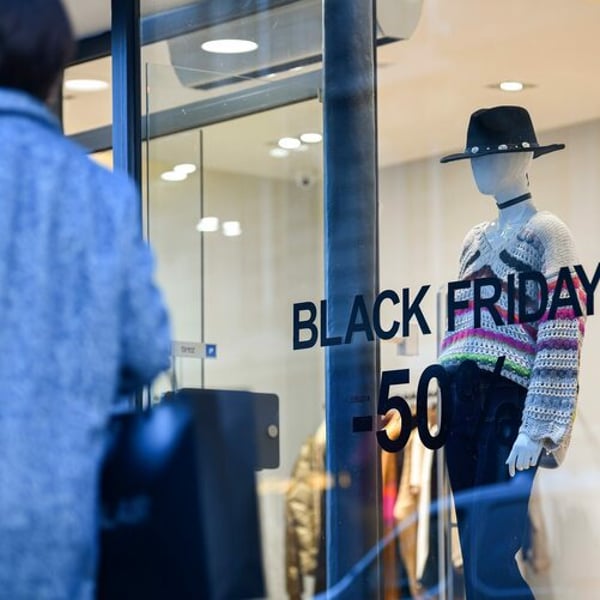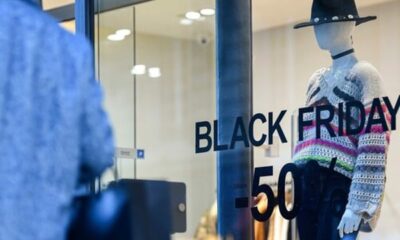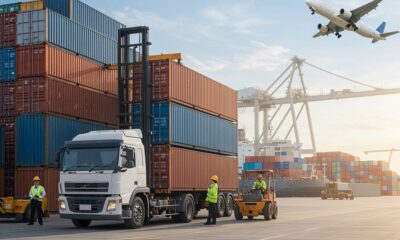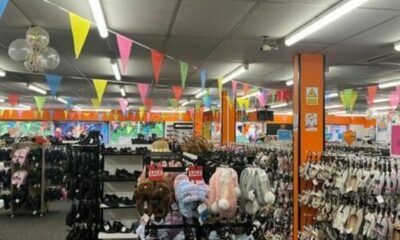Fashion
Birkenstock’s profit beats estimates on strong footwear demand at full price

By
Reuters
Published
August 14, 2025
Birkenstock beat third-quarter profit expectations on Thursday on strong demand for its clogs and shoes at full price, and said it was well placed to manage the hit from a 15% US tariff on European imports.
Shares of the German sandal maker jumped 5% in premarket trading as it also stuck to its annual margin forecast despite a “significantly weaker” dollar. Birkenstock’s suede leather closed-toe Boston clogs, which sell at $179.95 online, have seen firm demand from wealthy shoppers despite price increases, boosting its gross margin by 100 basis points to 60.5%.
The company makes 95% of its shoes at its own factories in Germany and expects to manage the fallout of US tariffs through price increases, cost discipline and inventory management, CEO Oliver Reichert reiterated. To offset tariff impact, it had raised prices by low single-digit in the last quarter. Sustained demand and strong full-price sales have also boosted performance at high-end peers such as Ralph Lauren‘s Polo t-shirts and Hoka shoes from Deckers Outdoor.
Birkenstock’s sales in Americas grew 16% after accounting for currency fluctuations, compared with 20% growth in the previous three months. It reported quarterly revenue of 635 million euros ($741.49 million), compared with expectations of 636.74 million euros, according to data compiled by LSEG.
On an adjusted basis, it earned 62 euros per share, above the estimate of 60 euros. Birkenstock maintained fiscal 2025 revenue growth at the high-end of its forecast range of 15% to 17%, while its expectations for adjusted EBITDA margin – a measure of profitability – remained unchanged at 31.3% to 31.8%.
© Thomson Reuters 2025 All rights reserved.
Fashion
New Balance launches three new stores in Bengaluru, India

Published
December 1, 2025
Global athletic brand New Balance has expanded its brick-and-mortar footprint in the Bengaluru metro area and opened its doors at three new locations: Indiranagar, HSR, and Forum South Bengaluru.
“We are excited to deepen our presence in Bengaluru- with our stores at Brigade Road, Indiranagar, Forum Mall, and HSR, anchoring us in a city that embodies innovation, culture, and an unwavering passion for fitness,” said New Balance India’s country manager Radeshwer Davar in a press release. “This weekend’s in-store experience and community run allowed us to bring New Balance’s philosophy to life while reinforcing our commitment to building inclusive fitness communities and we want to thank the people of Bengaluru who turned up in great spirit.”
Highlighting its long-term commitment to the Indian market, the new outlets are designed to offer an immersive retail environment and mix craftsmanship with technology. New Balance held an exclusive in-store event at its Indiranagar store, featuring an interactive brand showcase of both footwear and apparel. The New Balance Run Club also put on a community run which saw participation from over 200 individuals.
“Over the past year, we’ve more than doubled our retail footprint in India, and these three new stores are a strong testament to that momentum,” said Davar. “For us, it’s not just about expanding retail locations- it’s about creating experiential centres that bring innovation, performance, and style together under one roof.”
Headquartered in Boston, US, New Balance has been independent since 1906 and employs 10,000 associates worldwide. The business reported a global sales total of 7.8 billion dollars in 2024 and counts five athletic footwear factories in New England, US and one in Flimby, UK.
Copyright © 2025 FashionNetwork.com All rights reserved.
Fashion
U.S. Black Friday online sales hit record $11.8 billion, Adobe reports

By
Reuters
Published
December 1, 2025
American shoppers spent a record $11.8 billion online on Black Friday, up 9.1% from last year, final data from Adobe Analytics showed.
Adobe Analytics, which tracks over 1 trillion U.S. retail site visits, expects shoppers to spend $5.5 billion on Saturday and $5.9 billion on Sunday, up 3.8% and 5.4% from a year earlier respectively.
Separately, software firm Salesforce reported that American consumers had spent $18 billion on Black Friday purchases, up 3% from a year ago, with luxury apparel and accessories among the most popular categories.
Although U.S. consumers spent more this Black Friday compared to last year, price increases hampered online demand, according to Salesforce, with shoppers purchasing fewer items at checkout compared to last year.
At physical stores, the bargain-chasing was relatively subdued on post-Thanksgiving morning, with some shoppers saying they feared overspending amid persistent inflation, trade policy-driven uncertainty, and a soft labor market.
Cyber Monday, traditionally a big day for online deals, is expected to be the season’s biggest online shopping day again, Adobe projects, driving $14.2 billion in spending, up 6.3% from last year.
© Thomson Reuters 2025 All rights reserved.
Fashion
Mielle becomes NFL’s first textured haircare partner

Published
December 1, 2025
Textured haircare brand Mielle has launched a new partnership with the National Football League, marking the League’s first collaboration with a textured haircare company.
The campaign aims to support the millions of NFL fans with textured hair—women now make up about half of the NFL’s fanbase—while addressing the unique hair challenges faced by athletes wearing helmets, including dryness, breakage and frizz.
The partnership expands Mielle’s growing footprint in professional sports and is designed to boost representation, access to high-quality care, and product innovation for textured-hair athletes and fans.
“The NFL is excited to have Mielle, a brand that is committed to performance, community, and empowering fans and athletes, lean into the NFL partnership” said Tracie Rodburg, SVP global partnerships, NFL.
“This partnership aligns with the league’s mission to build lasting connections within our communities nationwide and celebrate the self-expression of our players and fans.”
The P&G brand says the collaboration gives Mielle a major platform to showcase the performance of its dermatologist-reviewed, Skin Health Alliance–accredited formulas under real athletic conditions.
“We’re honored to be the first textured hair care partner of the NFL through our partnership with P&G,” said Monique Rodriguez, founder and CEO, Mielle. “For so many of us, football represents family and community. It’s attending cookouts, tailgates, reconnecting with family and friends, and showing up in your favorite team colors. And for millions of fans, that includes twisting, braiding, and caring for your textured hair before kickoff.”
The announcement is accompanied by a social-first campaign, including the viral “Passing the Phone” video moment featuring talents across the league from including players, executives and agents, to players’ families and on-air talent.
Copyright © 2025 FashionNetwork.com All rights reserved.
-

 Sports1 week ago
Sports1 week agoWATCH: Ronaldo scores spectacular bicycle kick
-

 Entertainment1 week ago
Entertainment1 week agoWelcome to Derry’ episode 5 delivers shocking twist
-

 Politics1 week ago
Politics1 week agoWashington and Kyiv Stress Any Peace Deal Must Fully Respect Ukraine’s Sovereignty
-

 Business1 week ago
Business1 week agoKey economic data and trends that will shape Rachel Reeves’ Budget
-

 Politics1 week ago
Politics1 week ago53,000 Sikhs vote in Ottawa Khalistan Referendum amid Carney-Modi trade talks scrutiny
-

 Tech6 days ago
Tech6 days agoWake Up—the Best Black Friday Mattress Sales Are Here
-

 Fashion1 week ago
Fashion1 week agoCanada’s Lululemon unveils team Canada kit for Milano Cortina 2026
-

 Tech1 day ago
Tech1 day agoGet Your Steps In From Your Home Office With This Walking Pad—On Sale This Week


















